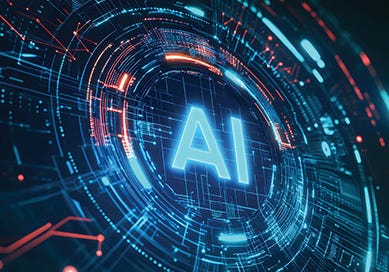In the language of computing, three simple keystrokes—Ctrl+Alt+Delete—have long served as the universal remedy for systems frozen in dysfunction, the command that restarts what has stalled. It is a small death and rebirth: old patterns dissolve, and from momentary darkness emerges a system renewed, freed from the errors and conflicts that had rendered it immobile. Cancer care stands at just such a moment of reboot today.
For nearly a century, we have waged war against malignancy with tools that, despite their increasing sophistication, have followed essentially the same command structure: cut what can be cut, poison what can be poisoned, and burn what can be burned. And while this approach has yielded genuine victories—transforming certain cancers from death sentences into manageable conditions—it has too often reached its computational limits against the disease’s staggering complexity. Like an overtaxed system running outdated software, conventional oncology frequently finds itself processing endlessly, consuming vast resources while patients wait for responses that may never come.
But across research institutions, treatment centers, and technology laboratories, a profound system upgrade is underway. The integration of artificial intelligence into cancer care represents not merely a new set of tools but a fundamentally different operating system—one capable of processing the vast data streams that overwhelm human cognition, perceiving patterns invisible to the human eye, and generating novel solutions to problems that have confounded generations of researchers and clinicians.
Consider what is already emerging: In pathology laboratories, neural networks examine tissue slides with a precision that captures details beyond human perception, identifying subtle cellular features that predict both disease progression and treatment response. In radiology suites, algorithms can detect lesions that are too small or too ambiguous for confident human diagnosis, potentially shifting the moment of intervention months or even years earlier. In clinical trial offices, machine learning systems match patients to experimental therapies with unprecedented specificity, connecting individuals not only to treatments for their specific cancer type but also to molecules precisely targeted to their tumor’s unique genetic signature.
Perhaps most remarkably, in research centers around the world, AI systems are reading, integrating, and extending the scientific literature at scales no human could manage—finding connections between seemingly unrelated findings, suggesting novel combinations of existing compounds, and even designing entirely new molecular entities that might disrupt cancer’s fundamental processes. What once took decades of painstaking laboratory work can now unfold in silico in weeks or days, compressing the timeline from discovery to implementation.
Yet this revolution’s most profound impact may lie not in its acceleration of discovery but in its restoration of humanity to the practice of oncology. As artificial intelligence assumes the cognitive burden of processing vast datasets and complex calculations, it paradoxically creates space for distinctly human elements to return to the center of cancer care. When freed from the tyranny of electronic health records and administrative demands, clinicians can redirect their attention to their patients’ faces rather than their screens, to conversations rather than computations, to the art of healing rather than the mechanics of healthcare.
This is the promise of the Ctrl+Alt+Cure revolution: not a cold, algorithmic approach to cancer that reduces patients to data points, but a symbiotic relationship between human and artificial intelligence that enhances both. The machine’s capacity for pattern recognition and tireless calculation complements the physician’s empathy, judgment, and moral imagination. The algorithm’s statistical insights inform but never replace the physician’s understanding of the whole person who happens to have cancer.
We stand now at the threshold of this transformation. The systems of conventional oncology—brilliant achievements of human ingenuity that have nonetheless reached their inherent limitations—are being refreshed with new capacities that can process cancer’s complexity at its scale. From this reboot will emerge approaches to prevention, diagnosis, treatment, and care that previous generations of oncologists could envision but not implement, cures they could theorize but not achieve.
In the pages that follow, we will explore how this convergence of human and artificial intelligence is reshaping every aspect of cancer care—from the laboratory to the clinic, from drug discovery to survivorship support. We will examine both the profound promise of these technologies and the significant challenges they present. And we will consider how, in this reboot of cancer care, we might preserve what is essential about the human experience of illness and healing even as we transcend the limitations of purely human cognition.
For in the end, the measure of this revolution will not be found in technological sophistication alone, but in its capacity to reduce suffering, extend life, and preserve dignity—to achieve not just computational but deeply human ends. Like all meaningful reboots, Ctrl+Alt+Cure aims not merely at system restoration but at transformation: a cancer care landscape where technology serves humanity, where artificial intelligence amplifies rather than replaces human judgment, and where the ancient enemies of human flourishing—disease, suffering, premature death—finally meet their match in this new partnership between human and machine.




This was a very informative article. Thank you Doug for your professional thoughts.
Maybe we need to get AI to answer questions like "how can I boost my immune system", what ate the reasons that 1 person in a sibling group of 4 gets cancer and the others don't" , or maybe "is there any reason to believe cancer will ever be cured since so many make money off of the disease"? Let's start with those!